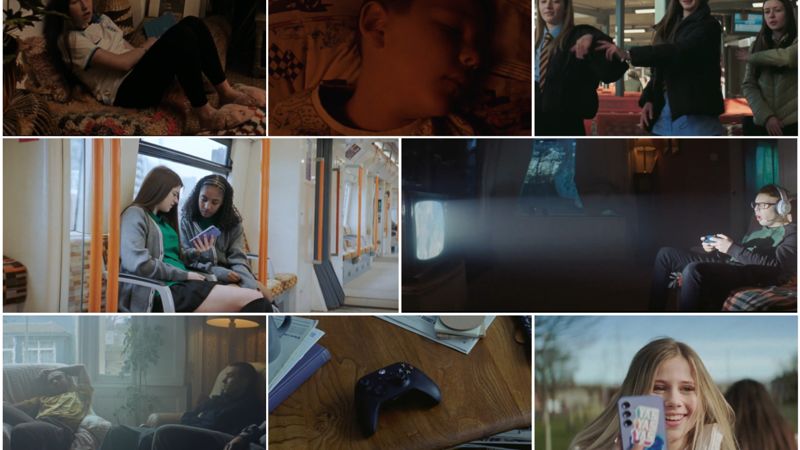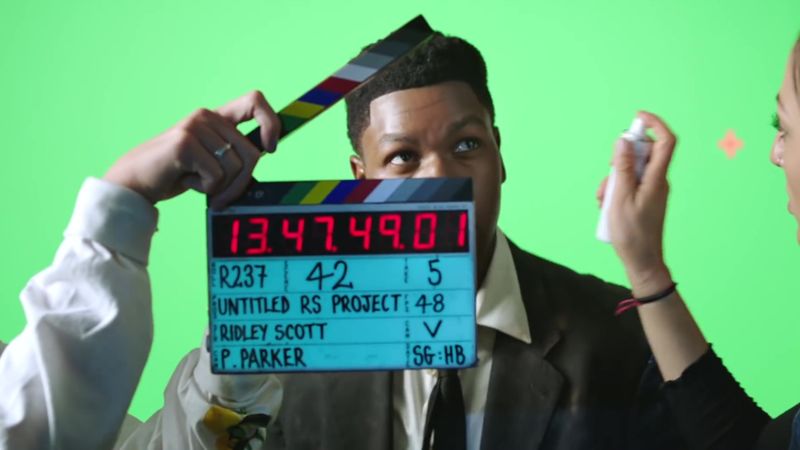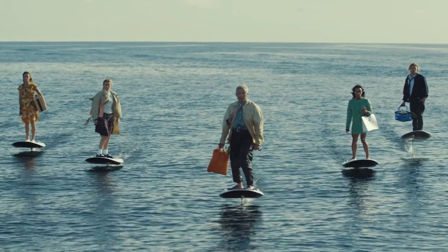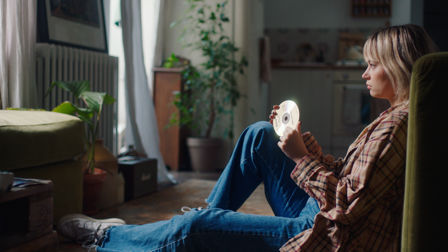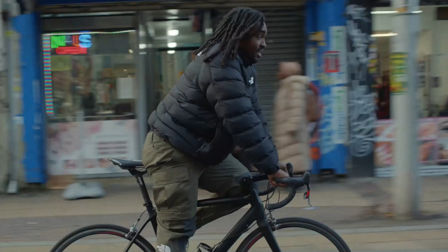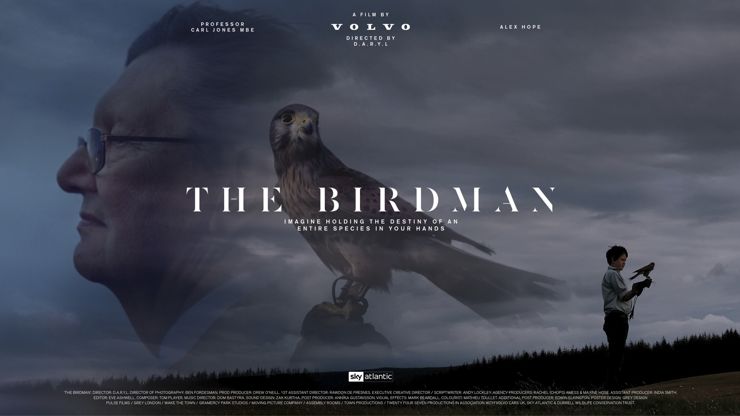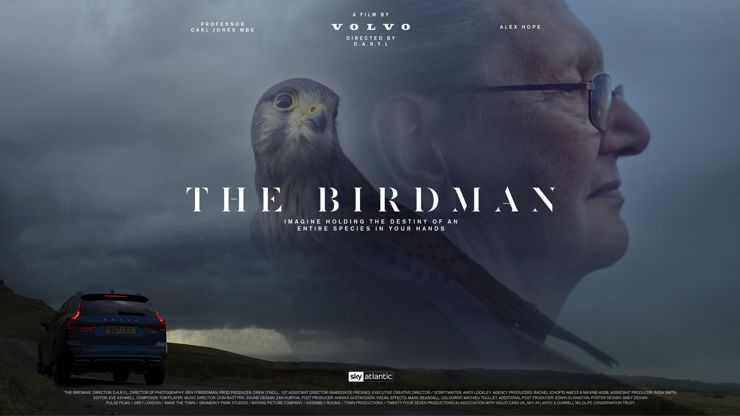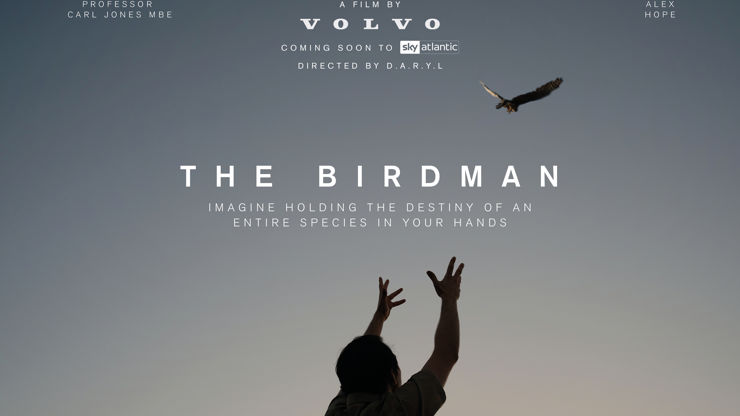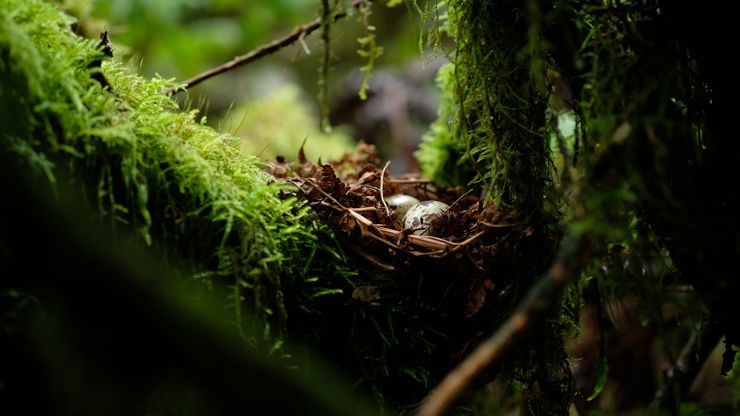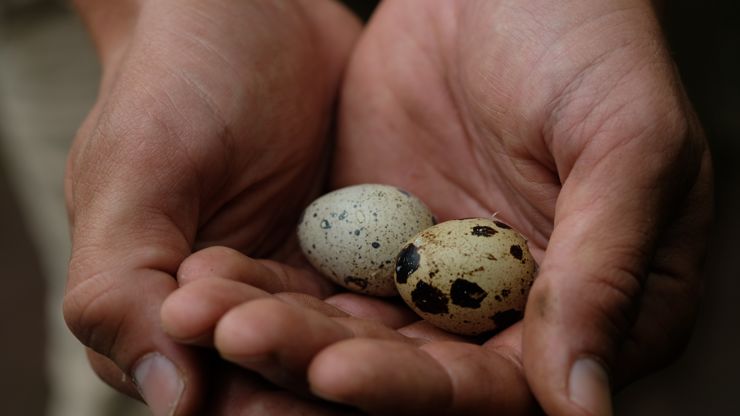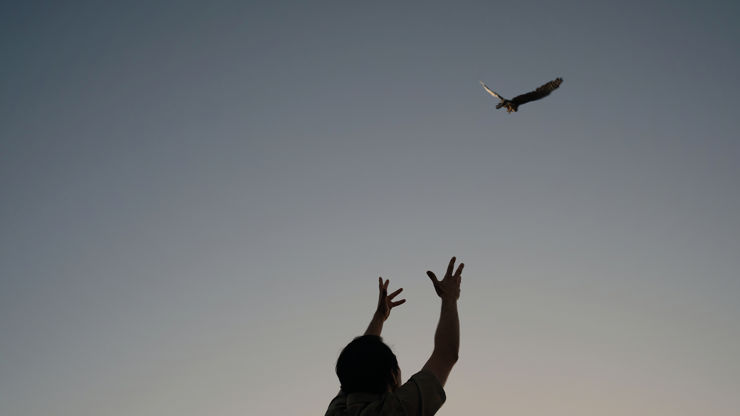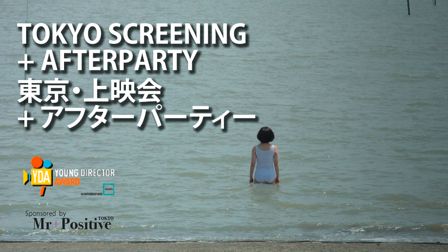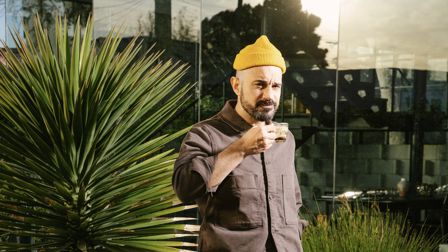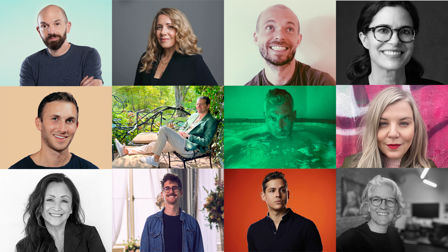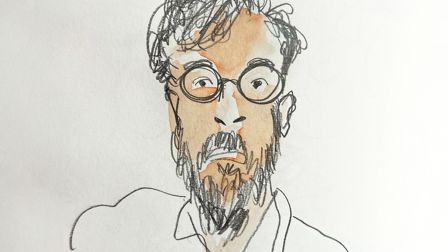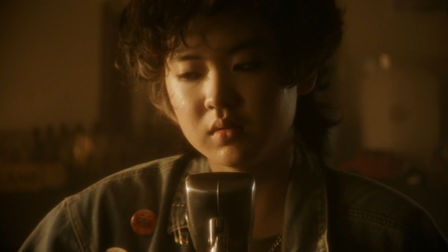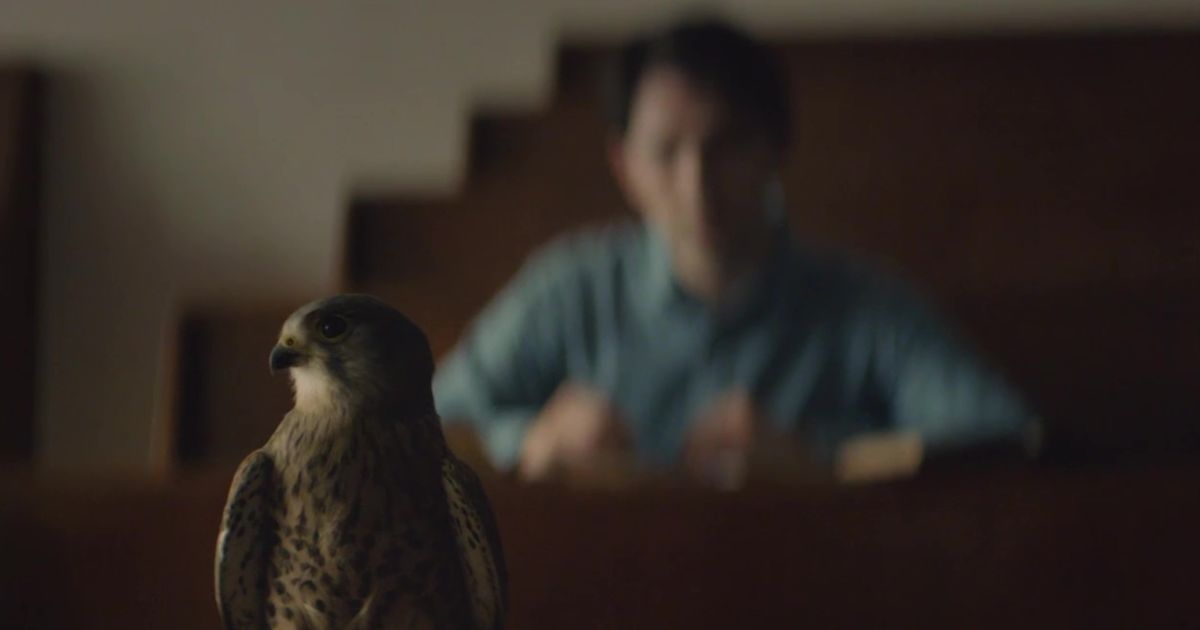How Volvo's Birdman took flight
As part of our Branded Entertainment Focus, we look back at Andy Lockley, ECD at Grey London, and Pulse Films directing team D.A.R.Y.L.'s installment of the compelling Defiant Pioneers series, telling the story of a conservationist whose methods have inadvertently been prototyping a solution to climate breakdown.
We all have rewarding aspects to our jobs, but I'm not sure if any of us could claim to have achieved anything quite as spectacular as saving five bird species from extinction (as well as three reptiles, a fruit bat and several plants). Oh... and potentially prototyping a solution to climate breakdown.
The subject of the latest installment in Volvo, Sky Atlantic and Grey London's Defiant Pioneers branded series, Professor Carl Jones MBE (aka The Birdman), and his work in conserving the Mauritius kestrel, forms the through line in a beautifully shot and thematically inspiring film of hope and expertise.
Shot by Pulse Films directing team D.A.R.Y.L., the film exemplifies the best in branded entertainment, being both a satisfying and compelling tale in its own right which also aligns with the brand's pledge to reduce the carbon footprint per car by 40% by 2025.
We wanted to know more about how the agency and directors shot The Birdman in flight, so caught up with ECD Andy Lockley and D.A.R.Y.L. to shoot the breeze.
Credits
powered by
- Agency Grey/London
- Production Company Pulse Films/London
- Director D.A.R.Y.L.
-
-
Unlock full credits and more with a Source + shots membership.
Credits
powered by
- Agency Grey/London
- Production Company Pulse Films/London
- Director D.A.R.Y.L.
- Executive Creative Director Andy Lockley
- Producer Rachel Amess
- Producer Maxine Hose
- Producer Talia Shear
- Editing The Assembly Rooms
- Post Production Gramercy Park Studios
- Grade MPC/London
- Music Wake The Town
- Producer Drew O'Neill
- DP Ben Fordesman
- Editor Eve Ashwell
- Colourist Matthieu Toullet
- Post Producer Edwin Elkington
- VFX Supervisor Mark Beardall
- Sound Designer Zak Kurtha
- Post Producer Annika Gustavsson
- Composer Tom Player
- Music Director Dom Bastyra

Credits
powered by
- Agency Grey/London
- Production Company Pulse Films/London
- Director D.A.R.Y.L.
- Executive Creative Director Andy Lockley
- Producer Rachel Amess
- Producer Maxine Hose
- Producer Talia Shear
- Editing The Assembly Rooms
- Post Production Gramercy Park Studios
- Grade MPC/London
- Music Wake The Town
- Producer Drew O'Neill
- DP Ben Fordesman
- Editor Eve Ashwell
- Colourist Matthieu Toullet
- Post Producer Edwin Elkington
- VFX Supervisor Mark Beardall
- Sound Designer Zak Kurtha
- Post Producer Annika Gustavsson
- Composer Tom Player
- Music Director Dom Bastyra
Andy Lockley - ECD, Grey London
What's the concept behind the Defiant Pioneers project?
With Volvo’s partnership with Sky Atlantic, we set out to redefine what a channel sponsorship could be. Rather than a simple badging and association exercise, we wanted to engage Sky Atlantic’s audience in a more meaningful way. The Defiant Pioneers film series has allowed Volvo to share its brand beliefs and values with Sky Atlantic’s ‘discerning’ audience by serving up more of what they want - powerful and engaging drama. Each episode tells the story of an individual who has pioneered new ideas or thinking in the areas of technology, sustainability or the environment that could have far reaching benefits to humanity.
We have coined these individuals Defiant Pioneers, because as with pioneers throughout history, their ideas are often met with scepticism or even derision by the establishment of the day, only to be validated years later. Volvo believe it is exactly this type of thinking that ultimately moves humanity forwards.
As well as saving species, Professors Jones has for the past 30 years inadvertently been prototyping a solution to climate breakdown.
All the films are based on remarkable real-life events. The Birdman tells the story of Professor Carl Jones MBE, who saved the Mauritius kestrel, once the world’s rarest bird, from certain extinction. He then went in to use the same methodology to save 8 other species that science had all but condemned. Professor Jones had a novel hypothesis that a species could be stabilised by first regenerating its environment and the biodiversity around it, we now know this as ‘re-wilding’, which the scientific establishment believe is one of the most effective ways to counteract global warming. So, as well as saving species, Professors Jones has for the past 30 years inadvertently been prototyping a solution to climate breakdown. This new film is intended to highlight Volvo’s own commitments to reduce the carbon footprint of its cars and its aim to move toward carbon neutrality’.
The films air in prime time between Sky’s most premium drama properties. Afterwards they are available on demand for a year.

What was it about Professor Carl Jones' story that you wanted to tell?
Professor Carl Jones MBE epitomises a defiant pioneer. He managed to save species that the scientific establishment had declared ‘unsavable’. Despite his methodology initially being scorned by some, no other conservationist has directly saved so many species from certain extinction. 9 in total, including birds, mammals and reptiles. Thinking creatively about the problem and being prepared to try new ideas is what Carl believes has been the major factor in his success.
A working-class boy from Wales, without any remarkable academic qualifications, went from breeding birds in his back yard to saving the rarest bird in the world by thinking laterally.
For the past 30 years, he, more than anyone, has seen first-hand how fragile the natural world is. But the years of relentless human pressure on the environment and the climatic change it has accelerated means that the natural world now faces its greatest threat ever.
Carl’s story can serve as an inspiration to anyone as it shows how much of a difference one individual can make. A working-class boy from Wales, without any remarkable academic qualifications, went from breeding birds in his back yard to saving the rarest bird in the world by thinking laterally.
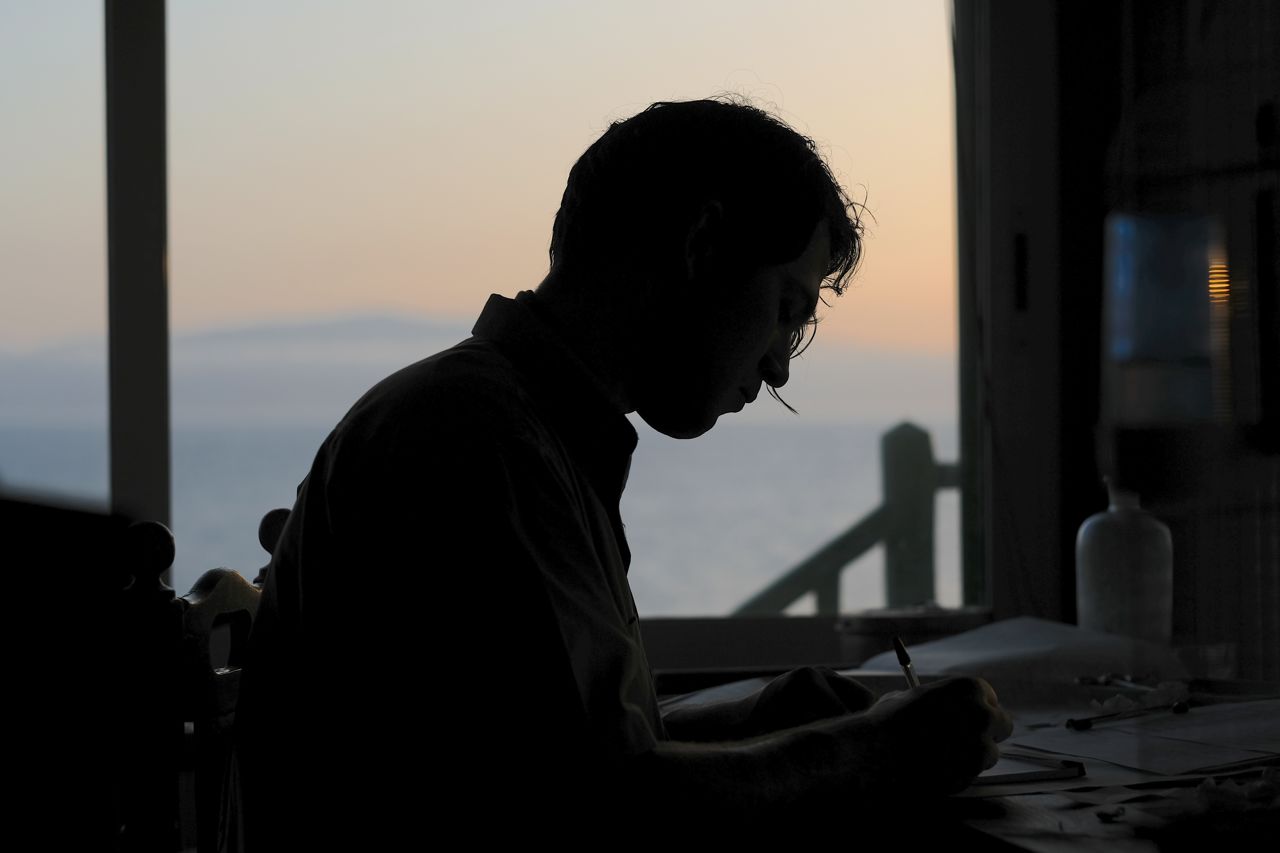
The film dramatizes Jones' early life, as well as taking us up to date. What are the key aspects to nail in such real-life dramatizations?
The main challenge with telling a story that spans a time-period such as this is compressing it into fraction of the time, yet still taking the viewer on a 30-year journey. It’s a hard task to achieve in feature film, let alone in just a few minutes.
We had to help the viewer form a relationship with the character (Carl) and to understand and empathise with him and his mission. D.A.R.Y.L. hit upon a really clever device for doing this which was to anchor the whole film in just a few minutes of present day time. The entire story is told by Carl as he prepares to give a keynote to a group of students and conservations. In fine tuning his speech he remembers the events of the last 50-plus years that have led him to this moment.
Alex [Hope, tha actor portraying the 20-year-old Jones] spent a lot of time workshopping with Carl and we also had lots of great archive photos and footage to work with so the wardrobe, styling and art direction was very faithful to reality. Right down to details like Carl’s old paisley cravat and binoculars!
It was smart because it meant we could skip huge chapters of Carl’s life and just isolate the key moments without it being disjointed or having to tell the story in a very linear way. We could switch back and forth between time frames to dramatize certain points. It was an efficient storytelling technique that allows us to reveal moments from Carl’s past that viewer to quickly understand the challenges he faced and how he overcame them.
The other critical thing was that the viewer had to buy the concept of real Carl being portrayed in the late 1970’s when he was in his 20’s, by an actor, Alex Hope. Alex spent a lot of time workshopping with Carl and we also had lots of great archive photos and footage to work with so the wardrobe, styling and art direction was very faithful to reality. Right down to details like Carl’s old paisley cravat and binoculars!
We also had take the viewer back even further to Carl’s childhood and depict him growing up in the Welsh valleys and training kestrels. For this we cast Carl’s actual 12 year old son. He looks very similar to how his father looked at that age, and for authenticity those sections of the film were shot in the valleys where Carl and his son now live, so these scenes were really more like documentary making.
And how do you ensure the brand is reflected in this?
Much of The Birdman story takes place historically, and Volvo didn’t play any role in Carl’s early life or with his conservation work on Mauritius. By anchoring the film in present day we were able to incorporate a Volvo credibly and naturally into the narrative as Carl’s present day car.
In the film Carl drives VOLVO XC60 plug-in Hybrid. The film concludes with a powerful statement from Volvo, which in a sentence summarises Volvo’s shared belief with Carl: ONE SPECIES CAUSED CLIMATE CHANGE, ONLY ONE SPECIES CAN FIX IT.
There is also now a long term partnership in place between Volvo and The Durrell Conservation Trust, of which Carl Jones is a leading figure. The partnership will help the Trust continue their excellent conservation work with the worlds most endangered species with a specific focus on tree planting and re-wilding projects.
What is it about the work of D.A.R.Y.L. that makes them a good collaborator on projects like this?
D.A.R.Y.L. are first and foremost incredible storytellers. They have a remarkable ability to visualise an entire complex narrative structure and play the film out scene by scene in their heads long before we begin shooting. For them it’s all about creating and engaging ‘story arc’ and choosing the critical beats that will take us on a journey through that story.
The task of ensuring that treatment becomes a reality requires an entirely different skill set. This is where D.A.R.Y.L. really come into their own. Personally, I have yet to work with a more ‘complete’ director/s than D.A.R.Y.L. They are meticulously concerned with every minute detail of their craft. The photography, art direction, performance, sound and their knowledge of film is encyclopaedic and forensic. But they are equally good at managing every aspect of the process - from patiently bringing everyone along on the creative journey - agency, clients, talent - to working with crew and creating such a positive, collaborative and relaxed set.
I have yet to work with a more ‘complete’ director/s than D.A.R.Y.L. They are meticulously concerned with every minute detail of their craft.
They are always genuinely open to ideas and welcome input on set, but you soon realise that virtually anything that you suggest has already been considered. They are always one step ahead. Such is their emotional investment in every production, they literally live and breathe every project 24/7 like it were the most precious thing they have ever worked on.
Although neither of the guys are from an ad agency background, they have an intuitive understanding of the strategic aspect of a project and work with agency and client to place real emphasis on this throughout, right through to the edit and post production. This is one of the reasons people enjoy working with them so much and find the process so inspiring and refreshing.
Clearly they are destined for things beyond commercials. Feature films is where they are headed, anyone who has been fortunately to work with them has no doubt of that. But I am sure their experiences working with big global car brands like Volvo will hold them in very good stead for the challenges that lie ahead.
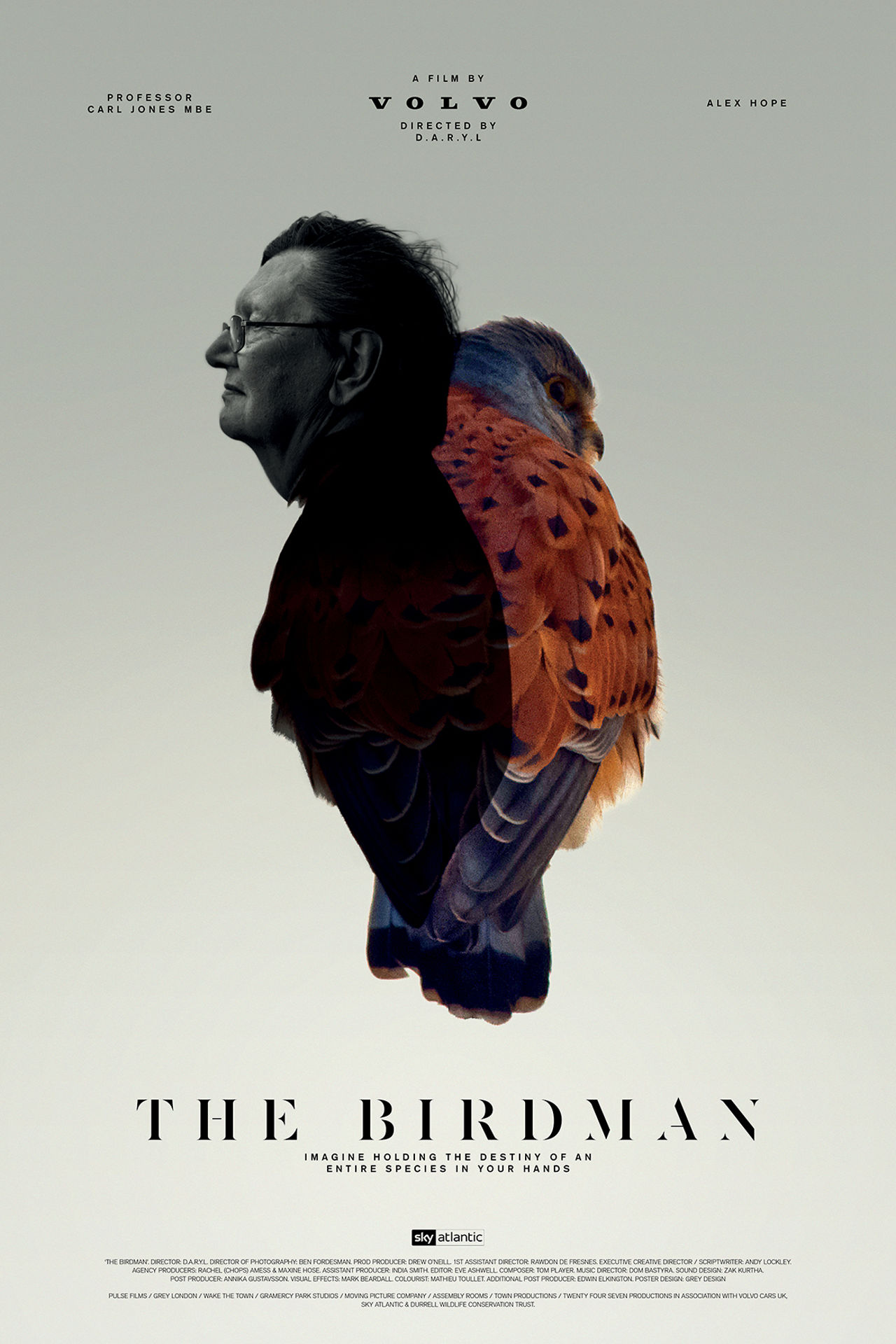
What was the most challenging aspect of the whole process?
Probably the trickiest factor of this project creatively has been casting people with no previous acting ability into a screenplay and having them act the part of themselves, in re-enactments of actual events that happened. Again, testament to the ability of D.A.R.Y.L. as directors to put people at ease and win their trust, even if they have never been around a film set before.
How was the editing process? Was there a strict duration in mind for the piece or was it down to how long it took the tale to be told?
Very much the latter, we had the wonderful luxury of no set time we had to hit. We know from previous films the sweet spot is around 7 minutes, but if it runs a minute over or under, so be it. Eve Ashwell, our editor at the Assembly Rooms has done an excellent job with the latest film following on from Billy Mead at 10/3 on the previous three films.
What the Defiant Pioneers film series demonstrates is that it is possible to create very impactful and effective brand communications without shoving product into people’s faces.
Alongside the main film we create a dozen or so idents/break bumpers which run around the other shows on Sky Atlantic and serve as little teasers for our film. It’s nice to be able to use all the bits that don’t make the final cut in these little 5 and 10 second time increments.
Can we expect more Defiant Pioneers stories in the future?
We sincerely hope so. There is certainly no shortage of amazing stories waiting to be told.
The Sky Atlantic partnership has been such a success for Volvo. Sky Atlantic’s audience enjoy the format too, we’ve seen views on VOD increase exponentially with new each episode. In the seven or eight minute duration of these films, the Volvo car is only on screen for around 20 seconds. What the Defiant Pioneers film series demonstrates is that it is possible to create very impactful and effective brand communications without shoving product into people’s faces.

D.A.R.Y.L. - Director, Pulse Films
What is the genesis for these Defiant Pioneers projects with Volvo? How does the collaboration begin?
The Defiant Pioneers series began with the ambition of creating a unique set of films about individuals trying to change the world. We wanted to find everyday people doing incredible things to help strangers in some way. For us, telling authentic stories in a cinematic way, was a dream opportunity. Our vision was to see the world the way our subjects saw it.
Carl's story instantly felt like it had the most compelling narrative. He’s literally saving species who are on the brink of extinction, we couldn’t pass up the opportunity to work with someone like him.
Intimate and personal. We wanted to tell the story within their purview, not observed from a distance.
Were you aware of Professor Carl Jones beforehand? How was his story chosen as the next tale to tell?
For this latest instalment of Defiant Pioneers there were a few potential ‘characters’ on the table, but Carl's story instantly felt like it had the most compelling narrative. Above anything though it was his spirit and determination that captured us – he’s literally saving species who are on the brink of extinction, we couldn’t pass up the opportunity to work with someone like him.
Also, our relationship with GREY London is a very special one and we have worked closely with them across all seven episodes of the series. We share an affinity when it comes to film and the way commercials can be a vehicle (excuse the pun) for telling these important stories.
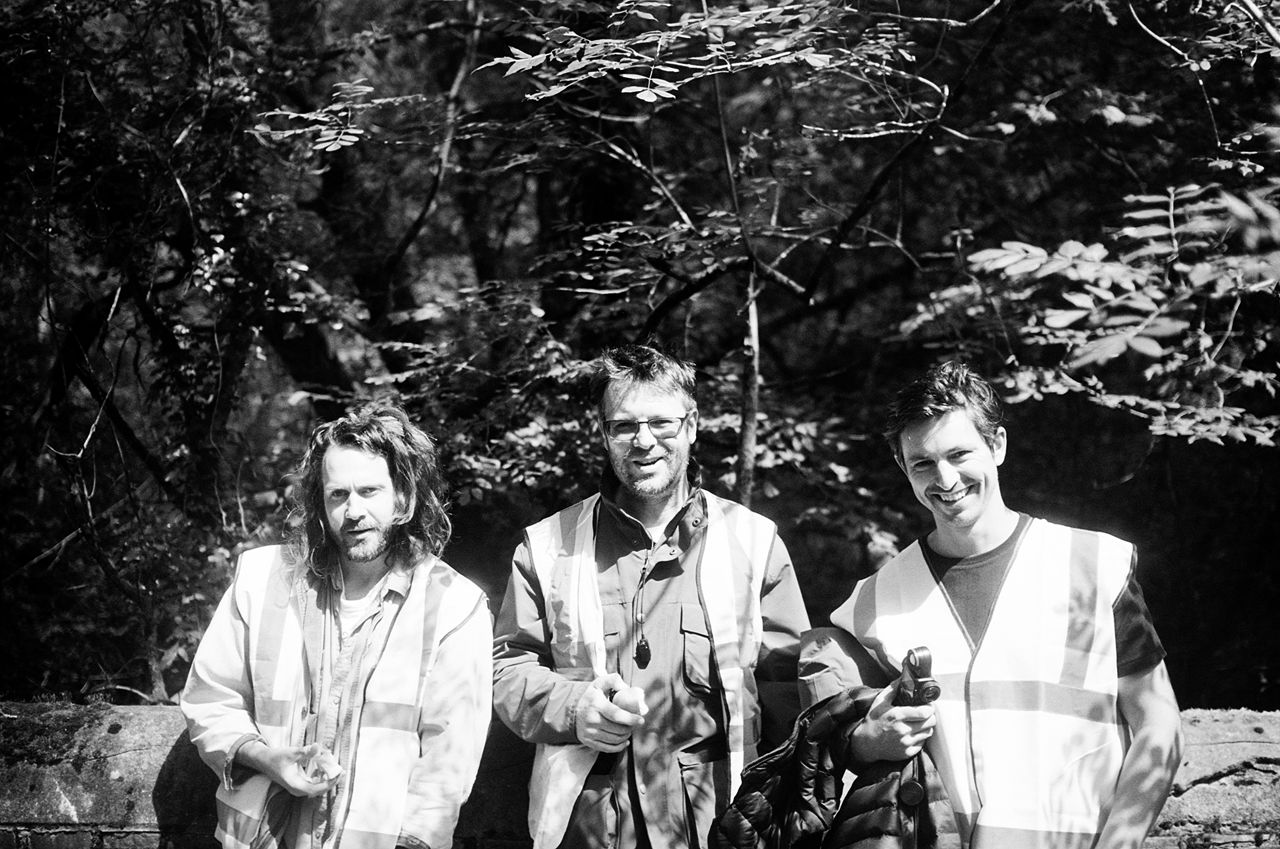
How did Prof Jones inform the piece? Were his words scripted, off-the-cuff or a bit of both?
Our process for documentaries always follows a similar pattern. It begins with a series of audio interviews with the subject, and it’s from those interviews that the narrative begins to develop and evolve. We learn where the emotion is, and we start building a narrative audio base. This process ultimately allows us to then think creatively about writing the visuals in an informed way.
With Carl is was the same. We had a general blueprint of his story arc and how he might articulate it, but we were always hoping to discover another layer once we dug deeper with the interviews. For us it’s always the emotional journey that is the priority when telling stories, so connecting with our subjects in this way is important to the process.
The way lenses are used in Paul Thomas Anderson and David Fincher films were a big influence. Imagining a documentary made by one of those directors ignited our creativity.
We did five separate audio interviews with Carl, each one another step towards him trusting us and the process and vice versa.
The short is beautifully cinematic. How did you decide on the visual language for the films in the series?
The line between documentary and fiction has never been too much of a focus for us. The idea that documentary is its own genre with a typical look/feel we find limiting creatively. A film, real or fictionalised should have its own film language that best tells that story.
With the Defiant Pioneers series we saw an opportunity to tell inspiring stories about real people in a way that felt more like a fiction film: story boarded, choreographed and beautifully shot. The way lenses are used in Paul Thomas Anderson and David Fincher films were a big influence. Imagining a documentary made by one of those directors ignited our creativity.
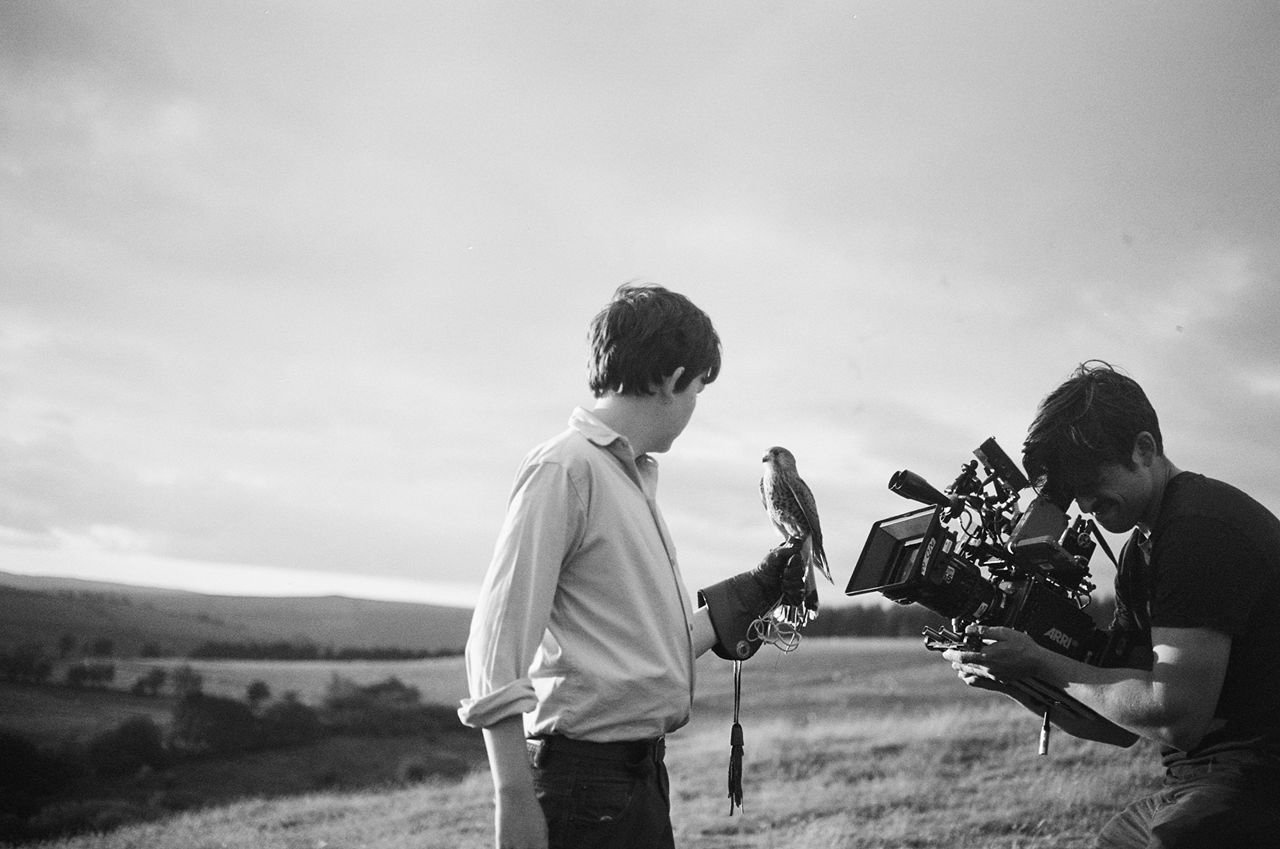
How was the shoot? Were there any issues?
The shoot felt like one of those special moments when everybody and everything was pulling in the same direction. Our crews on these Human Made shoots always seem to be really invested in a genuinely unique and beautiful way. A collaborative spirit is felt throughout – which obviously creates the best work.
Our understanding with our cinematographer Ben Fordseman and our lead actor Alex Hope felt amazing - it’s not an easy thing to have everyone on the same page so effortlessly.
There were so many story beats that had to be captured there that it was always going to be a miracle to pull it off. But somehow, the energy of the crew pulled us over the line and we didn't drop a shot.
What was the most challenging aspect of the whole process?
The shoot in the Canary Islands (acting as Mauritius) was with limited crew, and we were overly ambitious with our shot list for those days. There were so many story beats that had to be captured there that it was always going to be a miracle to pull it off. But somehow, the energy of the crew pulled us over the line and we didn't drop a shot.
It has to be said that Fordseman (DOP) became a real leader across that part of the shoot. Without an AD and with us switching from UK based crew to local crew in the Canary’s it was going to need someone to step up and take control.
I think everyone could see that Fordseman was on a mission to shoot some special images that inspired everyone and kept morale going.

How was the editing process? Was there a strict duration in mind for the piece or was it down to how long it took the tale to be told?
For this one we worked with both a DOP and an Editor who hadn't been involved in the series before. Eve Ashwell at Assembly Rooms cut this film and she did an amazing job. The balance between narrative and feeling is always a delicate thing and she played a major role in crafting that.
The length was pretty open, somewhere between five and ten mins is the screen time we had in our minds.
What’s up next for you?
We are writing a feature film, shooting a documentary and prepping our next ad!
)
